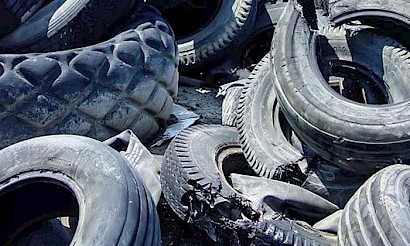Pyrolysis of end-of-life tires offers solutions for circular economy
 In the resent press-release, Automotive World magazine explores how pyrolysis technique for recovering raw materials from waste can be used to recycle end-of-life tyres.
In the resent press-release, Automotive World magazine explores how pyrolysis technique for recovering raw materials from waste can be used to recycle end-of-life tyres.
The technology solutions used in the automotive industry need to undergo radical change. By lowering the carbon footprint created by users, it has become easier to produce electric vehicles with zero emissions, but the production process still has a substantial negative influence on the environment.
Pyrolysis can help in closing the loop to make the automotive sector circular, reducing its environmental impact during car production.
According to a World Economic Forum analysis by Accenture, using circular methods would enable the automotive industry to cut carbon emissions from vehicle lifecycles by up to 75% and resource use by up to 80% per passenger-km by 2030 for an electric car. By lowering pollution and waste accumulation and protecting biodiversity, closing the loop will also lessen the industry’s ecological impact. To accomplish these objectives, the automotive supply chain will need to adapt both upstream and downstream.
Tyres, as a source of recurring waste, can be critical to the industry’s circularity. Tyres pollute the environment throughout their lifecycle, from the non-renewable fossil fuels used in manufacturing to the difficulty of recycling waste tyres by conventional methods. Tyre components like synthetic rubber and virgin Carbon Black are derived from petroleum. Carbon Black makes up over 20% of tyre mass; synthetic rubber content can be up to 25% depending on the type, as truck tyres have less.
However, to avoid starting from scratch in its pursuit for circularity, the automotive industry can employ already existing technology from other industries, such as pyrolysis. Raw materials recovered during the pyrolysis process can be used to manufacture new tyres, thus closing the loop for the tyre industry.
Only a few pyrolysis plants are currently in use in Europe. Different technologies are in various stages of development, and product quality is being stabilized.
The demand for pyrolytic recycled products is currently greater than the supply as major tire manufacturers work to switch out fossil-based components with sustainable alternatives and reduce emissions by 2050. Because of this, it is anticipated that the pyrolysis sector would expand quickly in the years to come.
You can return to the main Market News page, or press the Back button on your browser.

